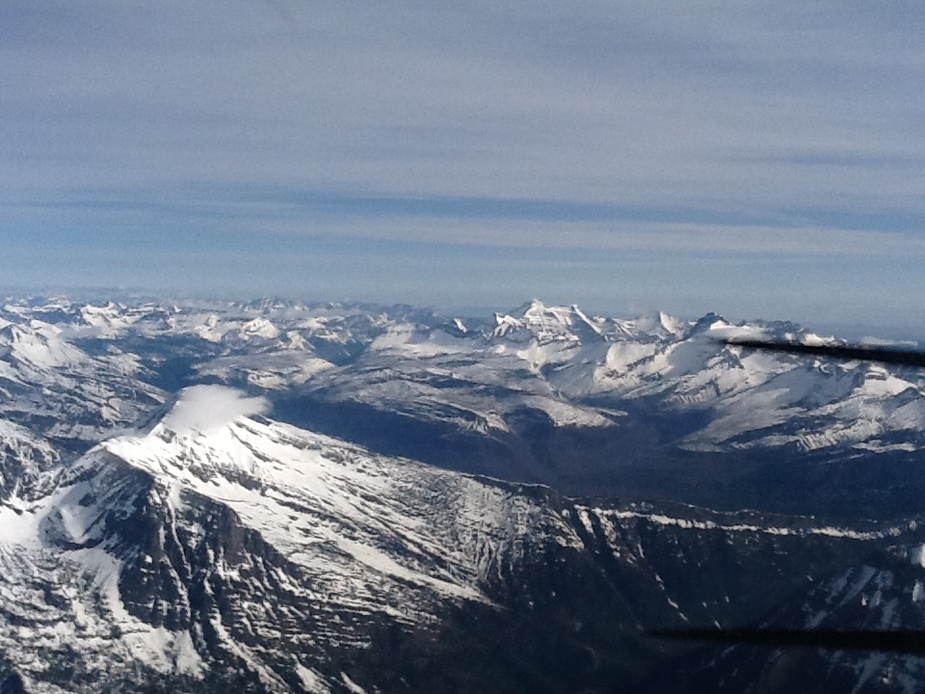I also hear very positive things about a gsm/3g booster with an antenna installed at the bottom.
It depends on the altitude, but I never had any reception above 5000ft, let alone FL160. You might be able to send a text at 3000ft, but a 3G connection is unlikely.
achimha, I have updated my profile with my email address.
Did you say you had problems finding the right connector for the external antenna socket? Does the docking station have a connector built into it?
Did you say you had problems finding the right connector for the external antenna socket? Does the docking station have a connector built into it?
The Thuraya XT phone has a recessed SMA female connector on its backside for which the car docker has the suitable bayonet plug. The car docker in turn comes with a standard SMA connector. The Thuraya car antennae can be directly connected to the car docker. The aircraft antenna needs a suitable cable to be fabricated. Peter's company is very competent in fabricating such cables of high quality.
Question regarding the hotspot, and wether or not one should aqcuire the Thuraya hotspot or go for the much cheaper TP-Link TL-MR3040:
On februari 8 Achimha wrote: "The Thuraya XT-Hotspot looks like a ripoff to me. It's a small battery powered wifi router running the OpenWRT firmware, a rebranded version of the TP-Link TL-MR3040 which sells for around € 40. It connects to the Thuraya XT using the USB data cable and the GmPRS protocol. I bet I could just buy the TP-Link and install OpenWRT myself."
On june 4 you he wrote "That can be handled by a small wifi hotspot, 40 € with integrated battery."
Does this imply that the standard flavour OpenWRT does NOT require any changes for GmPRS? I have a Thuraya XT; the hotspot would be a solution to the cable hassle with my Fujitsu Q550 tablet in the cockpit.
You need to install a few OpenWRT packages and do some config file adjustments. It's all standard functionality. It took me a few hours because I was not familiar with OpenWRT and because I bricked the box and had to solder a few wires onto the PCB and get a USB TTL adapter to flash it.
mdoerr is setting up his TP-Link at the moment. I can see if I can come up with instructions. Alternatively I could send you a preconfigured TP-Link at cost price (no promises yet).
I also hear very positive things about a gsm/3g booster with an antenna installed at the bottom.
I wouldn't believe that. It simply cannot work. GSM/3G towers focus their transmit power to the horizontal plane using sector antennae. There is almost no signal in the vertical plane. In densely populated areas, the GSM towers have very low transmit power so they can reuse frequencies. Also phones are not designed to receive hundreds of answers when they send out broadcasts for available towers. In addition to that there are several more reasons why it can't work well in an aircraft.
With respect, I'm not so sure. I get good results with an iPad2 using the built in 3G on the passenger seat of my 172 in the Western US. Essentially when in range of a populated place at any level up to 10 or 12 k I get real time weather via Foreflight. This equates to maybe 20 - 30% of flight time in Nevada, Utah and so on. Obviously this connection cannot be relied on, but it's exceedingly useful. Agreed, it doesn't work at all in UK (and Germany) but I've had useable results in Scandinavia and in France.
Here's a real time radar view on Foreflight and the same weather seen out of the window, near Jackson Hole, Wyoming.
It looks much lower than 10 to 12k AGL.
It looks much lower than 10 to 12k AGL.
That's true. But this one, from Montana, was sent in real time from 12,000'.

The issue is the height above the antenna the MSL altitude doesn't mean anything. You obviously fly over the Rockies, so your relative height above the transmitter is a few 1000ft. Flying in Switzerland at 10k, you will find a few ground stations to connect, but not in the Netherlands.
Another issue is that most base station antennas deployed here have gain in the vertical plane and point slightly downward. So signals with a high incident angle get quite a bit of attenuation.